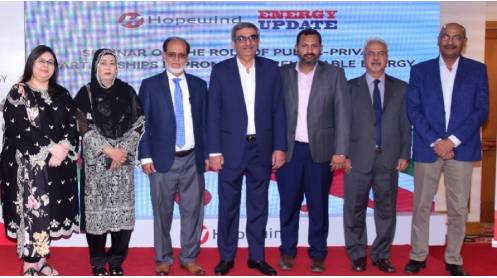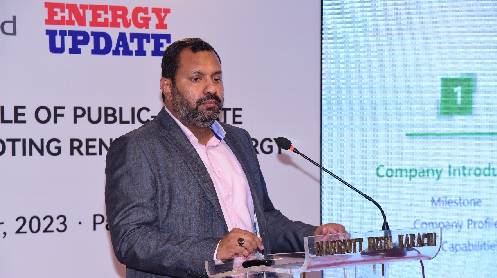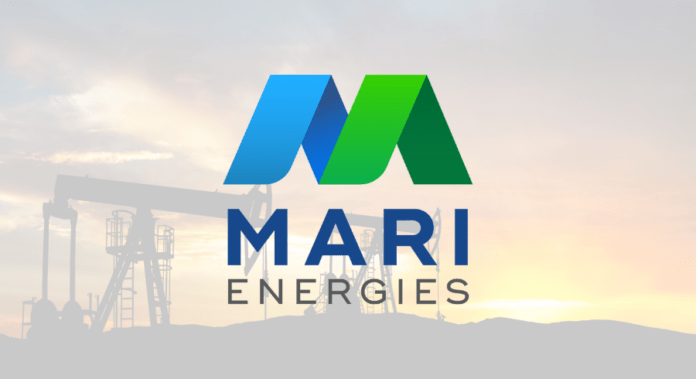Karachi – The Sindh government will fully support the development of new clean energy projects to harness the vast solar and wind power generation potential of the province under the mode of public-private partnership (PPP).
Sindh government’s Energy Secretary, Rehan Iqbal Baloch, stated this while speaking as the chief guest at a seminar on “Role of public-private partnerships in promoting renewable energy” organised by Energy Update in collaboration with Hopewind.
He said that Sindh had an abundance of resources to generate massive renewable electricity and support of the private sector was essential to tapping this potential.
He said the waste-to-energy was one such mode of generating renewable electricity that was yet to be explored in urban parts of the province,
He told the audience that earlier PPP mode was successfully implemented for extracting Thar coal for massive electricity production for the entire country.
“We are fully open to ideas as the private sector is more than welcome to come to us with their proposals for building new clean energy projects in the province as Sindh government has its PPP unit for implementing such plans for the energy sector,” he said.
Sonia Ishtiaaq Soomro, Strategic Adviser of Sindh Solar Energy Project, apprised the audience about the progress so far achieved in utilizing the solar energy potential of the province with support from the World Bank.
She said the Sindh Solar Energy Project stood for establishing utility-scale solar parks, providing solar home systems to underprivileged people in rural areas, and using rooftops of government buildings for installing solar systems.

She informed the audience that the Sindh government aimed to establish a solar park having 400 MW generation capacity under the PPP mode till 2025.
Senior energy expert, Irfan Ahmed, lamented that less than one GW of clean power based on solar energy was being produced in Pakistan when the clean energy resource could produce up to 2900 GWs of electricity.
He suggested that the PPP mode should urgently be utilised to improve the functioning of loss-making power distribution companies so that they could enhance their role in promoting clean electricity in the country.
He suggested that the government should minimize its involvement in the energy sector and only act as a facilitator to let the private sector come and run the affairs of power companies that have been mostly running in loss.
Rukhasana Zuberi, former chairperson of Pakistan Engineering Council, lamented that the countries, which had launched their regulatory regimes for renewable energy projects almost the same time Pakistan introduced such systems had shown massive growth in producing clean electricity.
Naeem Qureshi of Energy Update welcomed the overwhelming interest shown by the Chinese renewable energy companies in the clean energy market of Pakistan.
Syed Salman Mohiuddin, Hopewind’s Country Manager, said that Hopewind being the world’s leading renewable energy equipment producer had the technical expertise to ensure the speedy development of new clean energy projects under the PPP mode.
“We have also plans to conduct local R&D activities to promote and support the Pakistani renewable sector for maximum utilisation of solar and wind power,” he said.
He said the Hopewind was among the only four top inverter producers in China that are publicly listed companies.
He told the audience that Hopewind had emerged as the largest seller of wind converters globally,
He informed the audience that Hopewind was also the largest producer of string solar inverters having a capacity ranging from 5 KWs to 385 KWs. “We also deal in central inverters of several megawatts capacity”.
Mohiuddin said the Hopewind’s inverters were very stable having virtually zero per cent failure rate because they were not based on IGBT.
He told the audience that only very few genuine cases of warranty claims had so far been received by Hopewind since it had started serving customers in the wind and solar markets of Pakistan.






